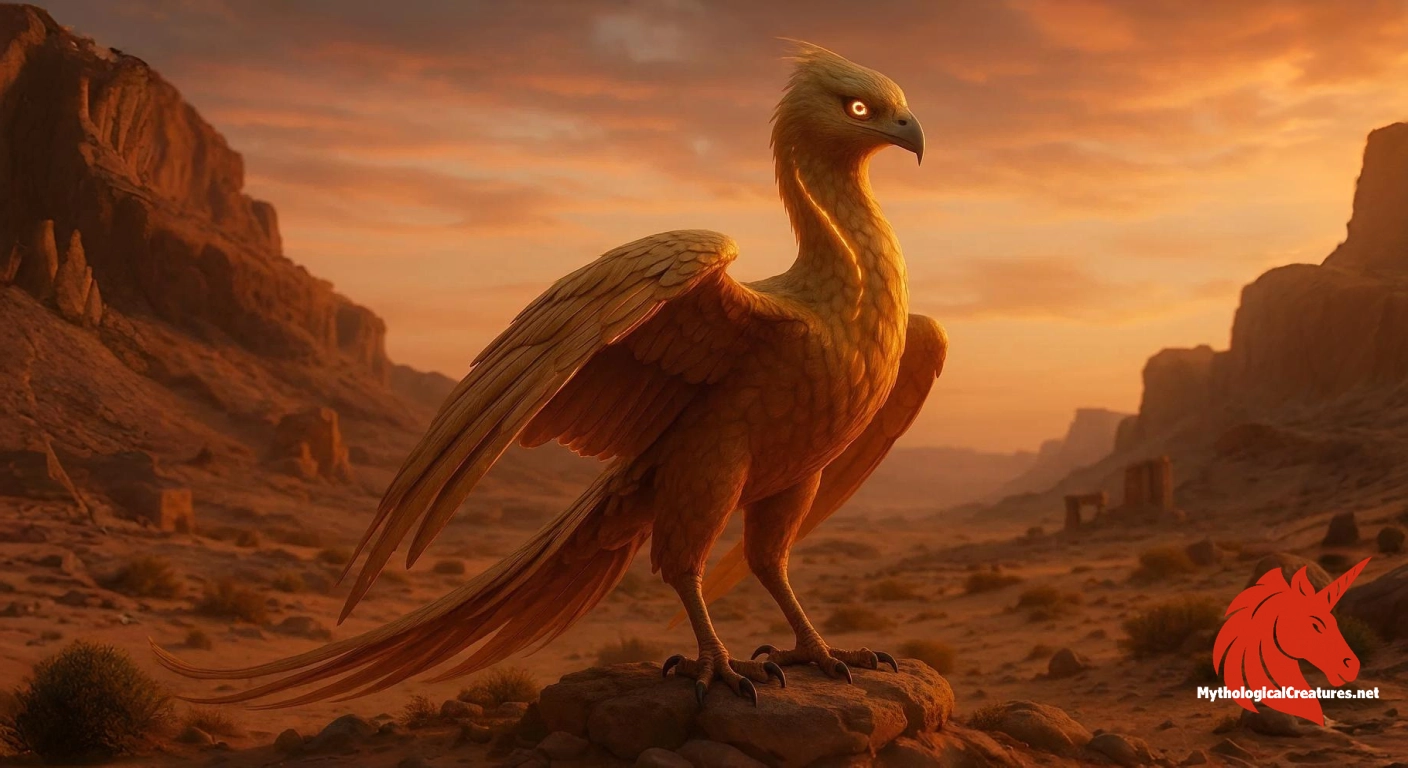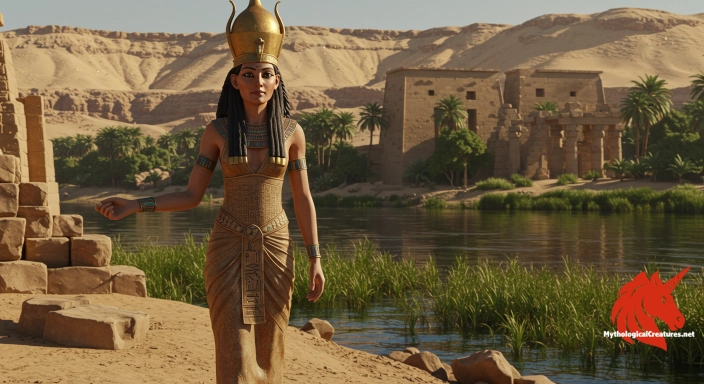Anqa: The Anqa is a fabulous golden female bird rooted in Arabian mythology.

Anqa
Anqa - The Anqa embodies the elusive and transcendent aspects of nature, often heralded as an omen signaling profound change.
Origins & First Encounters
Anqa is a luminous and enigmatic bird woven into the fabric of Arabian mythology, celebrated for its iridescence and majestic presence. It is portrayed as a fabulous female creature whose origins are shrouded in the mists of ancient desert lore. Emerging from the fertile interplay of oral tradition and poetic imagery, the bird is considered a symbol of celestial beauty and elusive mystery. Its golden plumage and rare appearances have been interlaced with allegories of transformation and the cyclic nature of time. The creature is often linked with the mystic ambience of the desert, where the interplay between daylight and dusk amplifies its legendary allure. A single sighting, as the myth goes, marks epochs of quiet wonder and heralds transitions in the natural order. Its presence in early cultural narratives speaks of a time when the ordinary was interwoven with the extraordinary in daily life. The Anqa has thus endured as a potent emblem of hope, renewal, and the otherworldly, capturing imaginations across generations and geographies. Its narrative continues to evoke both wonder and reflective insight into the eternal dynamics of life and nature.
Source Texts & Tale Variants
The tale of the Anqa stretches back through centuries of diverse storytelling, appearing in ancient manuscripts, poetic verses, and the rich tapestry of Arabian folklore. Early texts capture the bird’s mystical journey with delicate verses that blend natural phenomena with spiritual symbolism. In these narratives, the Anqa is often depicted as a messenger between the mortal realm and celestial spheres, resonating with the artistic expressions of its time. Folkloric variants have evolved over the ages, each adding layers of nuance to its portrayal. Manuscripts from medieval periods describe its fabled flight towards the region where the sun sets, enhancing its mystique with cosmic associations. Authors and storytellers have adapted the legend to mirror the shifting social and spiritual contexts of their eras. Diverse regional traditions have enriched the narrative, with each version underscoring different facets of its character. The collective corpus of these texts provides a multifaceted portrait that has both enchanted and educated its audience. The multiplicity of accounts not only reaffirms the bird’s mythic significance but also provides a window into the dynamic evolution of Arabian literary heritage.
Form & Powers
The Anqa is visually captivating, with a resplendent array of feathers that gleam in varying shades of gold and amber. Its wings are vast and magnificent, depicted as sweeping arcs that radiate a subtle, otherworldly glow. The creature’s anatomy is carefully rendered in myth, with a delicate yet robust frame that is both graceful and awe-inspiring. The bird’s eyes, deep and reflective, are described as holding the wisdom of ancient epochs and the silent secrets of the night. Its beak, slender and exquisitely curved, enhances its portrayal as a creature of refined beauty. Descriptions frequently mention a luminous aura that envelops the Anqa, suggesting a connection to the celestial sphere. Variations in the lore indicate that its size is monumental in comparison to ordinary birds, making its rare appearances even more striking. The detailed imagery of its finely tipped feathers and poised stance evokes a sense of disciplined elegance and untamed splendour. Every facet of its physical depiction underscores the intent to render a creature that is at once both ethereal and majestically formidable.
Regional Faces
The legend of the Anqa resonates across various regions within the Arabian world and beyond, adapting its mystique to local cultural nuances. In the heart of the Arabian deserts, the creature embodies the sweeping majesty and the impermanence of the desert landscape. Variations in nearby regions, such as Persia and North Africa, colour the story with distinct regional symbolism and often cast the bird in roles that mirror local spiritual beliefs. In some traditions, the Anqa is not only emblematic of beauty but also harbours healing qualities and a promise of renewal. The motif of appearing at the place of the setting sun is particularly potent in areas where the horizon is celebrated as a source of poetic inspiration. Local artists and storytellers have reinterpreted its legendary traits to fit regional aesthetics, sometimes blending its narrative with indigenous myths. The bird’s allegorical significance shifts subtly from one region to another, yet its universal appeal remains intact. These regional adaptations serve to enrich the core myth, making the Anqa a symbol of both local and shared cultural heritage. The enduring allure of the Anqa across diverse landscapes underlines its ability to evolve while preserving the essence of its ancient mystique.
Cultural Parallels
The Anqa invites intriguing comparisons with several other legendary birds from diverse mythological traditions. Its depiction as an elusive, radiant creature bears a striking resemblance to the phoenix, a symbol of rebirth and fiery transformation in many cultures. Similar to the Persian Simurgh, the Anqa is revered not only for its beauty but also for its role as a guide between the mortal world and the divine. Contrasts with the famed roc also emerge, particularly regarding size and symbolic gravitas. Despite these differences, each creature reflects the universal human fascination with transcending the ordinary. The shared themes of transformation and renewal form a common thread linking these mythical beings. Such cross-cultural parallels serve to highlight the Anqa’s role in drawing connections between different spiritual and artistic narratives. By examining these similarities and variations, one gains a richer understanding of how ancient societies sought to capture the ineffable in allegorical form. This comparative perspective illuminates the Anqa’s place within the broader spectrum of myth, where the extraordinary is celebrated across borders and eras.
Legacy & Modern Evolution
The enduring legacy of the Anqa is a testament to its timeless allure and the continual evolution of myth. Its image has transcended ancient manuscripts to inspire modern literature, art, and popular culture. Contemporary interpretations often cast the Anqa as a symbol of transformation, hope, and the perennial cycle of renewal—a bridge between the old and the new. As new generations reinterpret its symbolism, the Anqa emerges in various creative mediums, from graphic novels to cinematic portrayals. The bird’s portrayal in modern artistic endeavours links it to universal themes of resilience and transcendence, giving the myth fresh relevance. Its depiction has evolved to merge traditional motifs with contemporary aesthetics, highlighting its adaptability. Museums and cultural festivals continue to exhibit ancient illustrations of the Anqa, preserving its history while sparking modern admiration. The myth endures as a living narrative, resilient and adaptable, inspiring both scholarly inquiry and imaginative expression. Through these varied reinventions, the Anqa remains a powerful emblem of beauty, mystery, and the infinite cycle of rebirth.
Interesting Fact
The rarity of the Anqa has elevated it to a powerful symbol of change and renewal in Arabian folklore, with many considering its appearance a herald of profound transformation.
Quick Creature Info
Origin:
Features:
Associations:
Our Mythic Legendary Rating:

Also Sometimes Known As:
Habitat:
Supernatural Powers:
Physical Attributes:
Abilities:
Behavior:
Lore:
References
Discover Another Mythical Legend You May Not Have Heard Of?
Uncover the mysteries of ancient folklore and expand your knowledge of legendary beings from cultures around the world.
Dare to Meet the Neith....
Curated by the Mythological Creatures Team (rev. May 2025)
